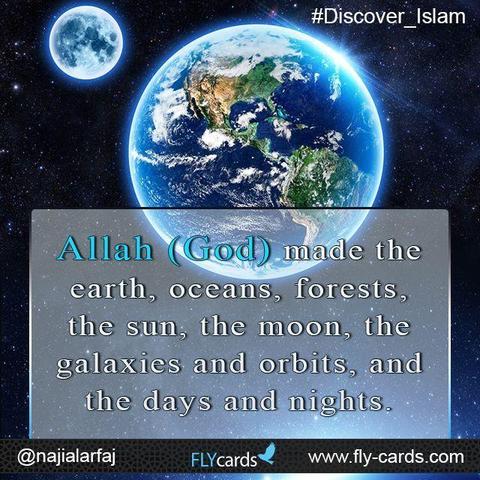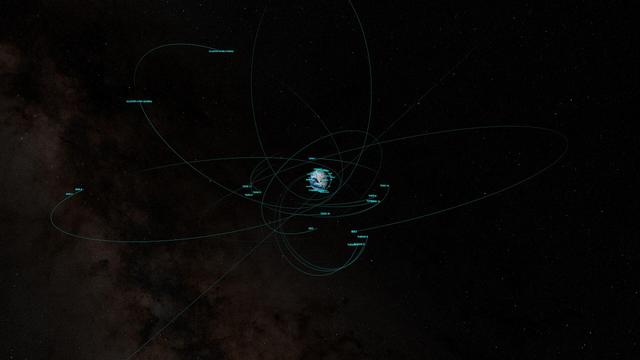New in the #VirtualObservatory: “The main sequence-white dwarf valley” by Ranaivomanana P. et al.
https://cdsarc.cds.unistra.fr/viz-bin/cat/J/A+A/704/A70
#Orbits #VisibleAstronomy #VariableStars #SubdwarfStars
#orbits
New in the #VirtualObservatory: “Catalog of orbits visual binary stars” by Romanenko L.G. et al.
https://cdsarc.cds.unistra.fr/viz-bin/cat/J/other/ARep/69.398
#MultipleStars #Orbits
New in the #VirtualObservatory: “Orbital periods of polars from TESS” by Hernandez-Diaz S. et al.
https://cdsarc.cds.unistra.fr/viz-bin/cat/J/A+A/703/A166
#Orbits #VisibleAstronomy #Photometry #CataclysmicVariableStars
OrbitalMashUp
Video: https://youtu.be/eBKdGdwv6is
Blogpost: https://blog.illestpreacha.com/wcccorbits
#worldbuilding #scifiart #geometry #WCCC #LiveCoding #Orbits #Planetary
For this week's Creative Code challenge by @sableraph : " Orbits”, OrbitalMashUp envisions a solar system where the orbits aren’t quite aligned. Coded with LiveCodeLab & HydraVideoSynth with its soundtrack coded in SonicPi.
Planets Packaging
Their stars and orbits
To the other galaxies
Altering their extremities
To finalise the proximities
That they are not bounded to keep
Or seek
The orbits are the culprits
In the clashing of the galaxies
And what is it,
That they really want to be able to see
#creativecoding #coding #sounddesign
#newmedia #scifi #animation #audiovisual
#math #geometricart #soundscape #3danimation
New in the #VirtualObservatory: “Ultracompact mass-transferring WD binaries” by Green M.J. et al.
https://cdsarc.cds.unistra.fr/viz-bin/cat/J/A+A/700/A107
#Orbits #Novae #CataclysmicVariableStars #StellarMasses
NASA's Fleet of Active Satellites (July 2025) 🛰️
#Orbits #PlanetaryOrbits #Satellite #SatelliteOrbits
⏩ 1 new picture and 1 new video from NASA (SVS) https://commons.wikimedia.org/wiki/Special:ListFiles?limit=14&user=OptimusPrimeBot&ilshowall=1&offset=20250725125821
New in the #VirtualObservatory: “Non-transiting exoplanets” by Gourves C. et al.
https://cdsarc.cds.unistra.fr/viz-bin/cat/J/A+A/699/A226
#MultipleStars #Exoplanets #Orbits #EffectiveTemperature
New in the #VirtualObservatory: “Exoplanets and host stars Gaia spect. cat.” by de Laverny P. et al.
https://cdsarc.cds.unistra.fr/viz-bin/cat/J/A+A/699/A100
#MultipleStars #StellarMasses #ChemicalAbundances #Orbits
New in the #VirtualObservatory: “Orbits of 665 SB2s in Lamost-MRS” by Guo S. et al.
https://cdsarc.cds.unistra.fr/viz-bin/cat/J/ApJS/278/46
#SpectroscopicBinaryStars #Orbits #RadialVelocity
New in the #VirtualObservatory: “Candidate mpc separation massive BH binaries” by Foustoul V. et al.
https://cdsarc.cds.unistra.fr/viz-bin/cat/J/A+A/699/A55
#VisibleAstronomy #Photometry #Orbits #Quasars
Third Interstellar Object Discovered
https://minorplanetcenter.net/mpec/K25/K25N12.html
#ycombinator #astrometry #observations #orbits #minor_planets #asteroids #comets #near_earth_objects #potentially_hazardous_asteroids
New dwarf planet found in our solar system
https://www.minorplanetcenter.net/mpec/K25/K25K47.html
#ycombinator #astrometry #observations #orbits #minor_planets #asteroids #comets #near_earth_objects #potentially_hazardous_asteroids
SquaresInOrbits
Video: https://www.youtube.com/watch?v=Edle8nOlM-M
#17squares #WCCC #wccchallenge #Livecoding #CreativeCoding #squares #geometrical
Blogpost: https://blog.illestpreacha.com/wccc17squares
For this week's Creative Code challenge by @sableraph : “17 Squares”, SquaresInOrbits is visually coded with four layered & edited #LiveCodeLab sketches. Each layer contains 17 squares through 11 squares and one cube(which is made up of 6 squares) . Audio is Coded with #SonicPi to act as an orbital soundtrack.
Celestial Beings made of 17 Squares
Wandering around acting as this space
Is theirs
Within their tiers
Ignoring the others that are there
For this is their space
For their paths in their pace
#Orbits #coding #soundscape #worldbuilding #scifi #animation #glitchart #3danimation
SOS - Day/Night cycle with Blue Marble and Black Marble Nightlights 🌎🛰️
#BlackMarble #Earth #EarthInformationCenter #Fleet #Night #Nightlights #Orbits #Satellite
⏩ 4 new pictures and 4 new videos from NASA (SVS) https://commons.wikimedia.org/wiki/Special:ListFiles?limit=19&user=OptimusPrimeBot&ilshowall=1&offset=20250517130125
#biologically speaking...
there exists a #natural #spectrum of #reproduction
this range exists between 3 polars (or even #orbits)
Female to Asexual to Male
....lots more "#colors" between than just #black #white OR #mixed #race...unless you are only looking at the mirror one way.
#DarkEnergy and #Einstein’s #Legacy : Medium
#Choline: The underappreciated #Nutrient that's vital for our #Brains : BBC
It's time to clean up #SpaceJunk before #Orbits become 'unusable,' according to new #ESA report : Live Sci
Check our latest #KnowledgeLinks
❛❛ something big – often called #PlanetX – might actually be out there. And a new study by a team from #Princeton University has substantially raised the likelihood that it really exists.
The evidence comes from an apparently non-random distribution in the orientation of the #orbits of smaller outer #SolarSystem bodies known as trans-Neptunian objects or #KuiperBelt objects (KBOs). ❜❜
🔗 https://CosmosMagazine.com/space/astronomy/planet-x-solar-system/ 2024 Dec 06
🔗 https://Wikipedia.org/wiki/Planets_beyond_Neptune#Planet_X … #Planets #Neptune
Once again it’s time for a quick update of activity at the Open Journal of Astrophysics. Since the last update a week ago we have published four papers, which takes the count in Volume 7 (2024) up to 102 and the total published altogether by OJAp up to 217. This means not only that we have reached a century for the year but also that so far in 2024 we have published more than double the number of papers that we published in all of 2023. I blogged about the significance of the figure 217 here.
In chronological order, the four papers published this week, with their overlays, are as follows. You can click on the images of the overlays to make them larger should you wish to do so.
First one up is “A generative model for Gaia astrometric orbit catalogs: selection functions for binary stars, giant planets, and compact object companions” by Kareem El-Badry (Caltech, USA), Casey Lam (Carnegie Observatories), Berry Holl & Jean-Louis Halbwachs (U. Geneva), Hans-Walter Rix (MPA Heidelberg, Germany), Tsevi Mazeh (Tel Aviv, Israel) and Sahar Shahaf (Weizmann Institute of Science, Israel). This one is in the folder Solar and Stellar Astrophysics. The paper presents a forward method for estimating the selection function (i.e. the probability of a system with a given set of parameters being included in a catalog). It was published on November 4th 2024.
Here is a screen grab of the overlay, which includes the abstract:
You can find the officially accepted version of the paper on the arXiv here.
The second paper to announce, published on 5th November 2024. is “Primordial magnetogenesis in a bouncing model with dark energy” by Marcus V. Bomfim (Rio de Janeiro, Brazil), Emmanuel Frion (Western U. Canada), Nelson Pinto-Neto (Espírito Santo, Brazil), and Sandro D. P. Vitenti (Paraná, Brazil). This paper, in the section on Cosmology and NonGalactic Astrophysics, presents a discussion of the possible generation of magnetic fields on cosmological scales by in a model involving a scalar field coupled to electromagnetism
You can see the overlay here:
The accepted version of this paper can be found on the arXiv here.
The third paper, published on 6th November 2024 in the folder marked Astrophysics of Galaxies, is called “Evidence for large scale compressible turbulence in the ISM of CSWA13, a star-Forming Lensed Galaxy at z = 1.87 with outflowing wind” by Itzhak Goldman (Tel Aviv, Israel). It presents a statistical analysis of the spatial distribution and kinematics of nebular gas with discussion of the nature of the turbulence present.
Here is the overlay
The final version accepted on arXiv is here.
Last in this batch is “Star formation in the high-extinction Planck cold clump PGCC G120.69+2.66” by Anlaug Amanda Djupvik (Aarhus, Denmark), João L. Yun (Lisbon, Portugal), and Fernando Comerón (ESO, Garching, Germany). It was published on 7th November 2024 in the folder marked Astrophysics of Galaxies. The paper uses imaging and spectroscopy information to identify sites of star formation in a molecular cloud. This is the overlay:
You can find the official accepted version on the arXiv here.
That’s all for now. I will post another update in a week.
https://telescoper.blog/2024/11/09/four-new-publications-at-the-open-journal-of-astrophysics-9/
#240905329v3 #arXiv240515469v2 #arXiv241100088v1 #astrometry #AstrophysicsOfGalaxies #CosmologyAndNonGalacticAstrophysics #DiamondOpenAccess #GAIA #generativeModel #GravitationalLensing #Orbits #PlanckColdClump #primordialMagneticFields #SolarAndStellarAstrophysics #srtarFormation #starFormingGalaxy #TheOpenJournalOfAstrophysics




